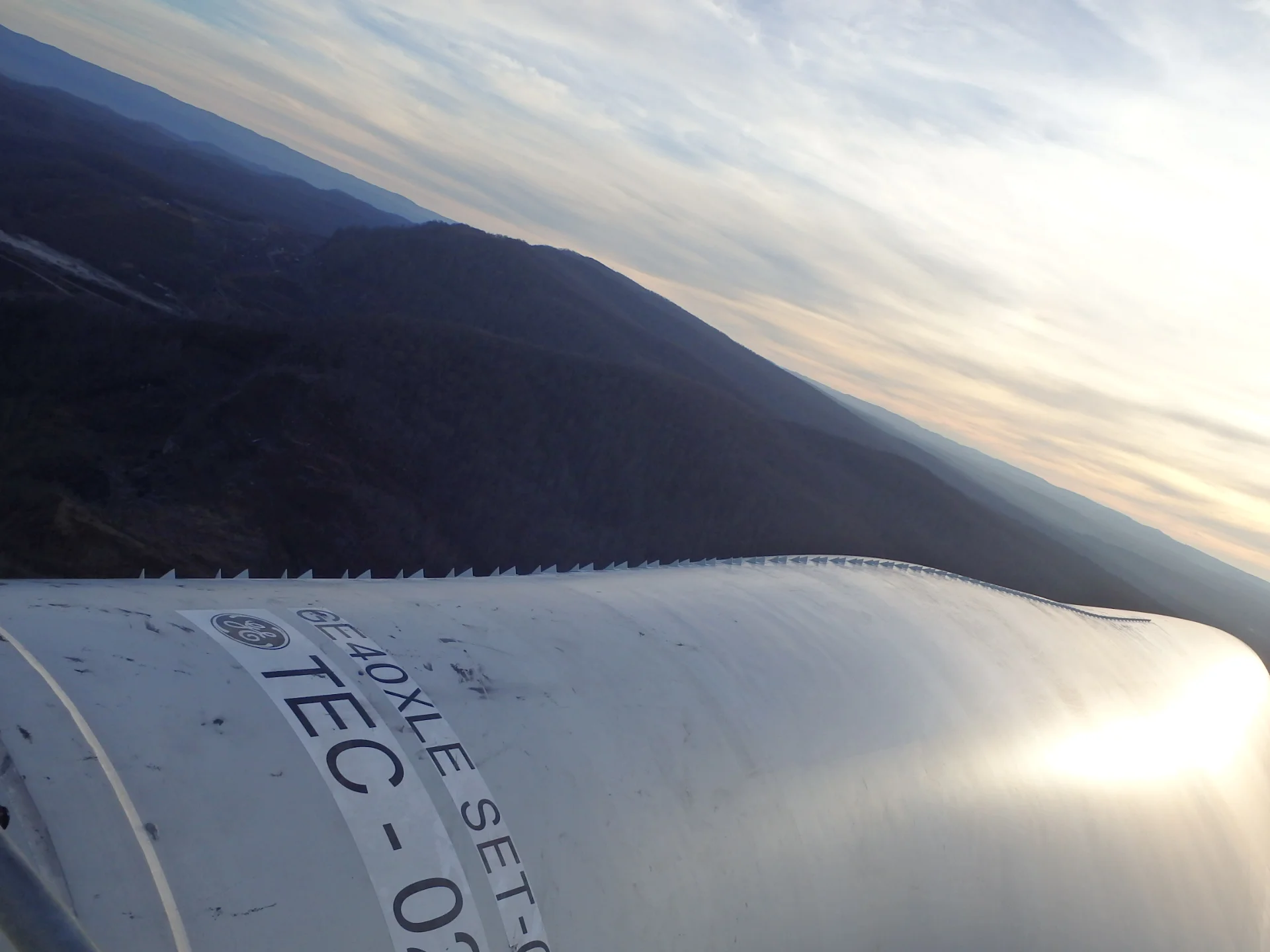General
+ What benefit do I have from VGs?
VGs increase the annual energy yield of a turbine by 1-3%.
+ How much experience do you have?
So far, we installed VGs on almost 4000 turbines. We offer VG solutions for more than 30 different turbine types. The average AEP increase from all our trials (188 test turbines across 39 sites) is 2.0%.
+ How do VGs work?
The blade root design is driven by structural and economical requirements, rather than by the aerodynamics. Due to a limited twist and chord in the root, every blade stalls at the inner part to some extent. VGs help to postpone or remove the stall in the root. The blades produce more energy.
+ Why are your VGs better than others?
VGs are not new on the market but we treat the issue with a holistic approach. We believe to be the market leader of third-party VGs because of three reasons:
- We profile every new turbine/blade type in a field test (flow visualization). Armed with an aerodynamic map of the blade we determine an optimal VG line.
- We have a superior material and the best adhesives.
- We support you on a very high engineering level, including feasibility studies, performance forecasts and performance evaluations.
+ Is there a load increase on my blades?
No, there is no load increase on the blades. We conducted load studies and FEA simulations. Additionally, already three turbine manufacturers have directly involved their load department team to analyze the effect of our root VGs on their turbines. The clear statement is: There is no load increase on the turbine!
+ Is the noise emission of the turbine affected by the VGs?
No, it is not. Since stall is a source of noise, the removal of stall leads to a reduction of noise. Practically, root VGs will have no effect on the overall noise emission of your turbine because the overall noise contribution from the inner part of the blade is insignificant.
+ Vortex upgrades did not work in the past, why should they now?
If well engineered, they will work! First, a lot of VGs out in the market suffer from either bad materials (brittle and not UV resistant), bad adhesion, wrong installation or wrong placement on the blade. We successfully tackled all of these issues with our VG solution. Secondly, oversimplified evaluation methods fail to identify the effect.
+ What is the lifetime of a VG?
After years in operation we see no significant damages. The VGs have a 20 year expected lifetime despite heavy damages due to heavy ice impacts or lighting strikes.
Installation
+ How are your VGs installed?
The installation is based on rope access. This is the most time and cost efficient method. Installation by service platform and cherry picker is also possible.
+ What is the estimated downtime for each turbine?
Generally, an experienced team manages to install at least 1 turbine a day.
+ Can a partially installed turbine run overnight?
Yes, if a tower is not completed in one working day, it is acceptable to run a partially installed tower for short periods of time (less than a week or two).
Material and Adhesives
+ What material are the VGs made of?
The VGs are made of a high-performance polymer with material properties which are relevant for low temperatures and UV radiation.
+ What adhesive do you use?
Our Vortex Generators are equipped with double-sided tape. The tape provides an excellent long-term durability and holding power.
Performance Evaluation
+ How do you prove the performance increase of the VGs?
We conduct performance validations of our VG solution based on comparative field tests. We do that on several test pairs.
+ How does the method work?
We compare power outputs between VG test turbines and unmodified control turbines. This is done for a historical period and a period after VG installation. The method is called power-vs.-power method (or side-by-side method).
+ What kind of data do you need for a full performance evaluation?
For a full trial, we need high-resolution SCADA data (1-10s) over a historical period of at least 6-12 months and at least 3 months of post-installation data.
+ How many test turbines do you need?
To obtain a statistically sound result, we need at least 6 test turbines (along with 6 control turbines). The turbine pairs must be carefully selected in advance (we call that “trial turbine selection”). We must ensure perfect comparability of the turbines in advance.
+ Do I necessarily need to conduct a full trial for every site?
No, you do not. We have already profiled and validated the VG effect on over 17 platforms. You can profit from our experience and save time and money by taking advantage of this. Based on an existing validation, we are able to calculate the AEP improvement for your wind farm. All we need are the Weibull parameters of your site. You can request your personal AEP forecast here.
+ Can I just look at my nacelle power curve to see the VG effect?
No, you can not. By removing the stall of the blade, the VGs influence the nacelle anemometer. Therefore, you can not compare the power curves before and after the installation of VGs (and any other performance upgrades). Therefore, our method does not rely on the nacelle wind speeds.
+ Why do we always need a control turbine?
Regardless of the method used (power vs. power, met-mast power curve, LIDAR, etc.), a control turbine is necessary in any case. With the relative comparison, we eliminate the seasonal effect on the wind turbine power. As a consequence, you will never be able to evaluate the AEP increase, if you install VGs on ALL turbines of your park (or any other kind of aerodynamic performance upgrade).
+ Has your method been validated?
So far, our method has been successfully validated by DNV-GL in several projects.

